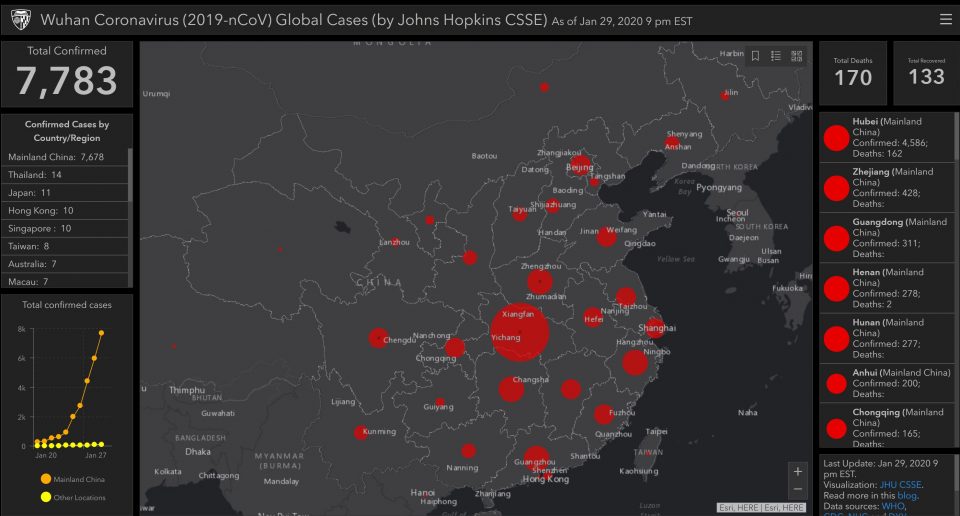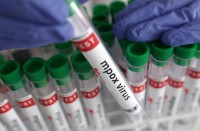(Videographics showing how the new coronavirus can be transmitted. Courtesy Agence France Presse)
(Eagle News) — The 2019 novel coronavirus or 2019 nCOV can easily spread from human to human, and the transmission can be via “aerosol droplets in the air released by sneezing or coughing” or by touching a surface which has the virus.”
In this videographics provided by Agence France Presse, it shows that the virus is “most contagious when there is close contact: a family home, a hospital bed or any place where an individual is less than a meter from an infected person coughing or sneezing.”
“It can also spread by touching a surface on which the virus is present, followed by contact with the mouth, nose or eyes,” it said.
The virus can even survive for days in a humid environment, it said, for example through droplets.
“Otherwise, its life is about three hours,” it said.
The US Centers for Disease Control and Prevention said that while the nCov 2019 is a “very serious public health threat, based on current information, the immediate health risk” to the general American public is “very low at this time.”
AFP data based on research said that “the risk of catching the virus after touching an object imported from China is therefore extremely low.”
“Like all viruses it cannot survive at high temperatures, so there’s no risk in eating well-cooked meat. It cannot be transmitted by water,” it said.
“At present there is no indication it can be passed on via sexual relations,” it said.
“Basic precautions – washing you hands regularly, cleaning widely used domestic surfaces and sneezing into a paper handkerchief that is then thrown away, call all be efficient,” it added.
-Highly contagious-
Current data showed that the nCoV 2019 is highly contagious and has an incubation period between 2 to 10 days.
On Monday, WHO estimated an incubation period of two to ten days. Among 34 patients examined by researchers from the Netherlands, the average period was 5.8 days.

According to a 2019-NCoV dashboard provided by the John Hopkins University, the virus has now spread in the following countries with the number of confirmed cases indicated:
Mainland China: 7,678
Thailand: 14
Japan: 11
Hong Kong: 10
Singapore : 10
Taiwan: 8
Australia: 7
Macau: 7
Malaysia : 7
France: 5
US: 5
Germany: 4
South Korea: 4
United Arab Emirates: 4
Canada: 3
Vietnam: 2
Cambodia: 1
Finland: 1
Nepal: 1
Sri Lanka: 1
Recently, however, the Philippines also confirmed its first nCOv-2019 case, a 38-year old Chinese woman who came from Wuhan, China via Hong Kong on Jan. 21 and was admitted to a public hospital on Jan. 25.
The John Hopkins University dashboard on the 2019 nCoV showed that as of Jan. 29, 9 p.m. EST, there are at least 7,783 confirmed cases worldwide, and 170 deaths — all in mainland China. There are 133 persons who have so far recovered from the infection.
The most number of cases are in China, and the province with the most number of confirmed infections is in Hubei province, where Wuhan City is located with 4,586 cases and 162 deaths so far.
Here is the complete list of provinces in mainland China with confirmed nCoV 2019 cases (as listed in the John Hopkins University database, data as of Jan. 29, 2020 9 p.m. EST):
Hubei (Mainland China)
Confirmed: 4,586; Deaths: 162
Zhejiang (Mainland China)
Confirmed: 428
Guangdong (Mainland China)
Confirmed: 311
Henan (Mainland China)
Confirmed: 278; Deaths: 2
Hunan (Mainland China)
Confirmed: 277
Anhui (Mainland China)
Confirmed: 200
Chongqing (Mainland China)
Confirmed: 165
Jiangxi (Mainland China)
Confirmed: 162
Shandong (Mainland China)
Confirmed: 145
Sichuan (Mainland China)
Confirmed: 142
Jiangsu (Mainland China)
Confirmed: 129
Beijing (Mainland China)
Confirmed: 111
Shanghai (Mainland China)
Confirmed: 101
Fujian (Mainland China)
Confirmed: 101
Guangxi (Mainland China)
Confirmed: 78
Hebei (Mainland China)
Confirmed: 65; Deaths: 1
Shaanxi (Mainland China)
Confirmed: 56
Yunnan (Mainland China)
Confirmed: 55
Hainan (Mainland China)
Confirmed: 43; Deaths: 1
Heilongjiang (Mainland China)
Confirmed: 43; Deaths: 1
Liaoning (Mainland China)
Confirmed: 39
Shanxi (Mainland China)
Confirmed: 35
Tianjin (Mainland China)
Confirmed: 27
Gansu (Mainland China)
Confirmed: 26
Inner Mongolia (Mainland China)
Confirmed: 16
Jilin (Mainland China)
Confirmed: 14
Xinjiang (Mainland China)
Confirmed: 14
Guizhou (Mainland China)
Confirmed: 12
Ningxia (Mainland China)
Confirmed: 12
Qinghai (Mainland China)
Confirmed: 6
Scientists and researchers still said that there is still much to know and determine regarding this new type of coronavirus.
“There is an ongoing investigation to determine more about this outbreak. This is a rapidly evolving situation and information will be updated as it becomes available,” the US Centers for Disease Control and Prevention said.








